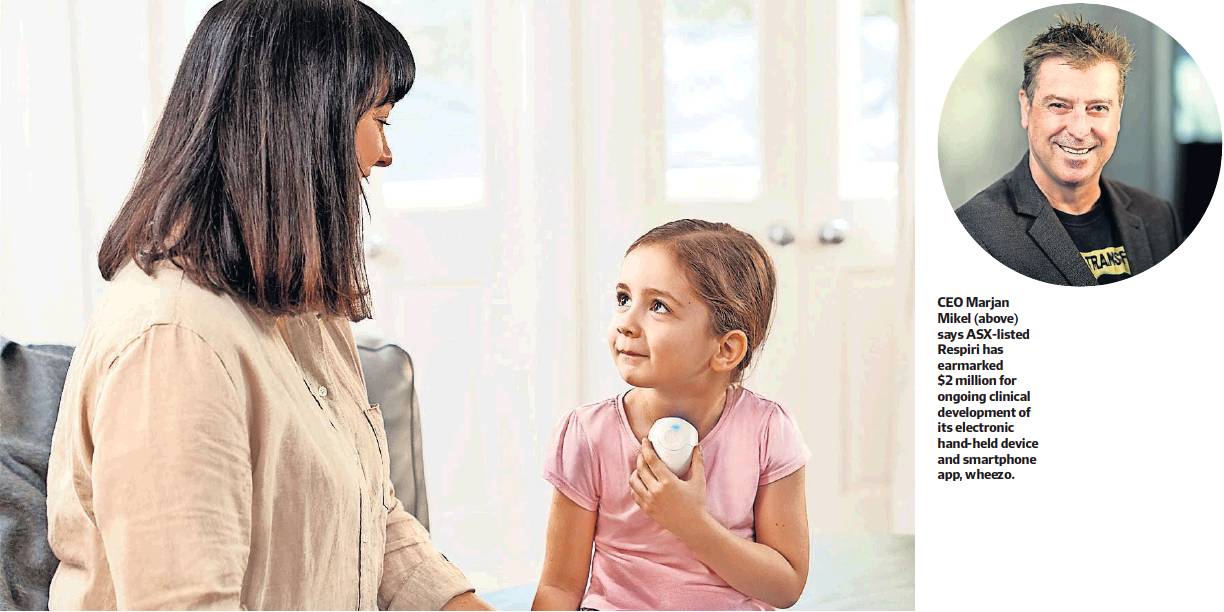A breath of fresh air for asthma sufferers
Asthma is one of the world’s most prevalent and debilitating chronic diseases with 339 million people affected by the condition. The University of Washington’s Institute for Health Metrics and Evaluation (IHME) estimates that 420,000 people died from asthma worldwide in 2016.
Australia has one of the highest rates of asthma in the world.
The Australian Bureau of Statistics’ National Health Survey of 2017-18 found that 2.7 million Australians have asthma. A 2015 study of asthma prevalence in the OECD by the IHME found that Australia (12 per cent) was second only to New Zealand (13 per cent).
In 2017-2018, according to the Australian Institute of Health and Welfare, there were 38,792 hospitalisations for asthma treatment; 44 per cent of these were children aged younger than 14.
A landmark 2015 report by Deloitte Access Economics, The Hidden Cost of Asthma, calculated that the cost of asthma to Australia – combining health, productivity and other financial costs (“economic costs”) and “burden of disease” (the loss of healthy life and premature death) – was $27.93 billion.
Asthma is a chronic condition that affects the airways that carry air into our lungs. People with asthma experience episodes of wheezing, shortness of breath, coughing, chest tightness and fatigue due to widespread narrowing of the airways.
According to the National Asthma Council Australia, the fundamental causes of asthma are not completely understood. The strongest risk factors for developing asthma are a combination of genetic predisposition and environmental factors.
Fortunately, there has been significant progress in medical science’s understanding and management of asthma.
“Only 60 years ago there was little known about asthma,” says Asthma Australia. “We now have a strong understanding of the underlying elements of asthma, best practice models of care and a vast array of medications and tools to manage asthma and associated conditions.”
With 441 asthma-related deaths in Australia in 2016, Asthma Australia cautions that “there is still a long way to go to reduce the impact of asthma”.
Marjan Mikel, CEO of ASX-listed eHealth technology developer Respiri, says such a death toll shows that “clearly something is not working in the treatment of asthma”.
Mikel believes digital technology holds the key to more effective asthma management and the company has just released wheezo, a proprietary eHealth platform – an electronic hand-held device and smartphone app – designed to extend care for asthma patients beyond the clinic.
“Wheezo assists asthma patients, caregivers and health professionals with a solution that supports improved asthma care, management and understanding,” Mikel says.
Respiri believes wheezo fills a gap in the market for a device that allows asthmatics to self-monitor in between clinical appointments. Importantly, it will provide an objective assessment of a patient’s respiratory condition.
“Wheeze is one of the symptoms subjectively assessed by physicians based on patient recall and self-assessment,” Mikel says. “This approach has been used by the medical profession in the absence of a tool that provides an objective assessment of a patient’s respiratory condition.”
Wheezo analyses patients’ breathing for the presence of a wheeze. The algorithm-based app tracks symptoms and triggers, medication usage and weather conditions.
Mikel describes the device as a “sophisticated electronic stethoscope”.
“This is the first asthma management device to show such a high correlation to the stethoscope measurement of wheeze via the chest or back, which is the gold standard used by doctors to assess patients.”
Prior to the product’s commercial release in October, Respiri commissioned a clinical study involving wheezo. Conducted at two Melbourne hospitals, the study compared wheezo to clinicianbased stethoscope measurement of wheeze in asthma and chronic obstructive pulmonary disease patients. Physicians used the device to assess wheeze severity in 56 patients admitted with pronounced airway disease and a clinically detectable wheeze. The findings were successfully correlated with an assessment of wheeze severity using a stethoscope.
Stakeholder feedback has played a critical role in supporting the development of wheezo. Feedback from Respiri’s market research of 100 patients found that four out of five asthma patients using wheezo reported that their lives had been materially improved.
Respiri has partnered with pharmaceutical company Cipla to market, sell and distribute wheezo in pharmacies nationally. The pharmaceutical multinational also has first right of refusal to sell and distribute wheezo in other countries. Wheezo is also available online.
Development of the wheezo technology continues apace, in part informed by the stakeholder feedback that Respiri continually gathers. Respiri has earmarked $2 million for ongoing clinical development.
Respiri has filed for another patent on recent improvements to its wheezo algorithm. The additional intellectual property relates to an enhanced method of processing recordings of a patient’s breathing to detect wheeze, where the algorithm processes sound signals and pitches characteristic of wheeze via the trachea. The algorithm eliminates background noise to deliver an improved level of detection and measurement.
“We have first-mover advantage in Australia and we are on track to deliver our asthma management technology in the UK by the fourth quarter of 2021 and the US in the second half of 2022,” Mikel says.
